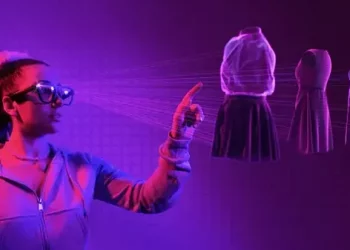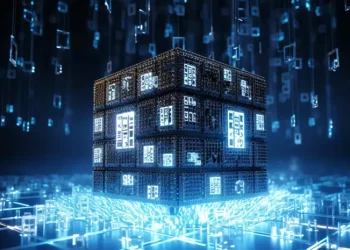The term “metaverse” has gained significant attention in recent years, especially in the context of virtual reality and digital environments. Among the various facets of the metaverse, the concept of the “spatial metaverse” stands out as a key area of innovation and development. This article explores the spatial metaverse in detail, including its definition, technological underpinnings, applications, and future prospects.
Defining the Spatial Metaverse
Concept Overview
The spatial metaverse refers to a virtual universe that mirrors physical space in a digital environment. Unlike traditional virtual worlds, which might be confined to screen-based interactions, the spatial metaverse emphasizes spatial awareness and interaction. This means that users can navigate and interact within a three-dimensional space that replicates or extends real-world environments.
In a spatial metaverse, digital spaces are designed to be immersive and interactive, allowing users to experience a sense of presence similar to being in the physical world. This concept is closely linked with advancements in virtual reality (VR), augmented reality (AR), and mixed reality (MR), which together create a more engaging and realistic virtual experience.
Key Characteristics
Three-Dimensional Environment: The spatial metaverse operates within a 3D space where users can move around and interact with objects and other users as if they were in a physical location.
Immersive Experience: Through VR headsets and AR devices, users experience a high level of immersion, feeling as though they are physically present within the digital environment.
Interactivity: Users can interact with digital objects and other participants in real-time, enhancing the sense of presence and engagement.
Persistent Worlds: The spatial metaverse often features persistent worlds that continue to evolve and exist independently of individual user sessions. This means that the virtual environment remains consistent and dynamic over time.
Technological Foundations of the Spatial Metaverse
Virtual Reality (VR)
Virtual Reality is a cornerstone technology for the spatial metaverse. VR provides users with a fully immersive digital experience by creating a simulated environment that can be explored and interacted with. VR headsets, such as the Oculus Rift, HTC Vive, and PlayStation VR, are essential tools for accessing the spatial metaverse. These devices track head and hand movements, allowing users to navigate and manipulate the virtual space.
Augmented Reality (AR)
Augmented Reality overlays digital information onto the real world, enhancing users’ perceptions of their physical environment. AR technologies, like Microsoft’s HoloLens and various smartphone applications, allow users to see and interact with virtual elements within their real-world surroundings. In the context of the spatial metaverse, AR can bridge the gap between physical and digital spaces, creating hybrid environments where users can engage with both.
Mixed Reality (MR)
Mixed Reality combines elements of both VR and AR to create interactive environments where physical and digital objects coexist and interact. MR headsets, such as the Magic Leap and HoloLens, enable users to interact with digital content while still being aware of their physical surroundings. This technology enhances the spatial metaverse by providing more seamless and natural interactions between virtual and real-world elements.
3D Modeling and Spatial Computing
Creating a spatial metaverse requires sophisticated 3D modeling and spatial computing techniques. 3D modeling involves designing and rendering digital objects and environments, while spatial computing focuses on understanding and processing spatial data. Tools like Blender, Unity, and Unreal Engine are commonly used to build and render the detailed 3D environments found in the spatial metaverse.
Blockchain and Decentralization
Blockchain technology plays a significant role in the spatial metaverse by enabling decentralized ownership and transactions. Through blockchain, users can buy, sell, and trade virtual assets and properties securely and transparently. Decentralized platforms, like Decentraland and The Sandbox, utilize blockchain to create and manage virtual worlds where users have ownership and control over their digital assets.
Applications of the Spatial Metaverse
Entertainment and Gaming
One of the most prominent applications of the spatial metaverse is in the realm of entertainment and gaming. Virtual worlds provide immersive experiences for players, allowing them to explore fantastical environments, engage in complex narratives, and interact with other players in real-time. Games like Fortnite and Roblox offer expansive virtual worlds where players can socialize, create, and compete.
The spatial metaverse enhances these experiences by providing more realistic and interactive environments. Players can navigate 3D spaces, manipulate objects, and experience a sense of presence that traditional 2D games cannot offer. This level of immersion transforms gaming into a more engaging and participatory activity.
Social Interaction and Networking
The spatial metaverse also offers new opportunities for social interaction and networking. Virtual spaces can serve as meeting places for individuals from different locations to connect and interact. Platforms like AltspaceVR and VRChat enable users to attend virtual events, socialize with others, and collaborate on projects.
In the spatial metaverse, social interactions are more dynamic and immersive, as users can engage in face-to-face conversations, participate in group activities, and explore shared environments. This creates a more authentic sense of presence and connection, bridging the gap between online and offline social experiences.
Education and Training
Education and training are areas where the spatial metaverse has the potential to make a significant impact. Virtual classrooms and training environments can simulate real-world scenarios, providing hands-on experiences and interactive learning opportunities. For example, medical students can practice surgical procedures in a virtual operating room, while engineers can explore complex machinery in a digital lab.
The spatial metaverse allows for more engaging and practical training experiences, enabling learners to acquire skills and knowledge in a controlled and immersive environment. This can enhance the effectiveness of education and training programs across various fields.
Real Estate and Virtual Property
The concept of virtual real estate has emerged within the spatial metaverse, where users can buy, sell, and develop digital properties. Virtual land and properties can be used for various purposes, such as creating virtual storefronts, hosting events, or designing interactive experiences.
Platforms like Decentraland and The Sandbox offer users the opportunity to purchase virtual land and develop it according to their preferences. This creates new possibilities for entrepreneurship and investment within the spatial metaverse, as users can generate income through virtual real estate ventures.
Healthcare and Therapy
Healthcare and therapy applications are also finding their place within the spatial metaverse. Virtual environments can be used for therapeutic purposes, such as exposure therapy for phobias or anxiety disorders. By creating controlled and immersive environments, therapists can help patients confront and manage their fears in a safe and supportive setting.
Additionally, the spatial metaverse can facilitate remote healthcare services, allowing patients to consult with medical professionals and receive treatment in a virtual setting. This can improve accessibility and convenience for individuals seeking medical care.
Challenges and Considerations
Technical Challenges
Building and maintaining a spatial metaverse involves several technical challenges. Creating realistic and interactive 3D environments requires substantial computational resources and advanced software. Ensuring seamless performance and minimizing latency are crucial for providing a smooth user experience.
Additionally, integrating various technologies, such as VR, AR, and blockchain, presents challenges in terms of compatibility and interoperability. Ensuring that different systems work together effectively is essential for creating a cohesive spatial metaverse experience.
Privacy and Security
Privacy and security are critical concerns in the spatial metaverse. As users interact and share information within virtual environments, safeguarding their personal data and protecting against cyber threats are paramount. Implementing robust security measures and privacy protocols is essential for maintaining user trust and ensuring a safe virtual experience.
Ethical and Social Implications
The spatial metaverse raises ethical and social considerations that need to be addressed. Issues such as digital divide, accessibility, and the potential for virtual environments to reinforce existing inequalities must be carefully considered. Ensuring that the spatial metaverse is inclusive and equitable is important for fostering positive and meaningful interactions.
Economic Impact
The economic impact of the spatial metaverse is still evolving, but it has the potential to reshape various industries. From virtual real estate to digital goods and services, new economic models are emerging within the spatial metaverse. Understanding and navigating these economic changes will be crucial for businesses and individuals involved in the spatial metaverse.
The Future of the Spatial Metaverse
Trends and Innovations
The spatial metaverse is continuously evolving, with new trends and innovations shaping its future. Advancements in technology, such as more powerful VR headsets, improved AR devices, and sophisticated 3D modeling tools, will further enhance the capabilities and experiences within the spatial metaverse.
Emerging technologies, such as artificial intelligence (AI) and machine learning, are also expected to play a role in the spatial metaverse. AI can be used to create dynamic and responsive virtual environments, while machine learning can enhance user interactions and personalization.
Integration with the Physical World
The spatial metaverse is likely to become increasingly integrated with the physical world. As AR and MR technologies advance, the boundary between physical and digital spaces will continue to blur. This integration will enable more seamless and interactive experiences, allowing users to move effortlessly between the real and virtual worlds.
Expanding Applications
The applications of the spatial metaverse will likely expand into new areas, including business, entertainment, and daily life. As more industries explore the potential of the spatial metaverse, innovative use cases and applications will emerge, transforming how we work, play, and connect.
See also: What Is a Metaverse Platform?
Conclusion
The spatial metaverse represents a significant advancement in the concept of virtual environments, offering immersive and interactive experiences that mirror physical space. With its emphasis on three-dimensional environments, interactivity, and immersion, the spatial metaverse has the potential to revolutionize various aspects of our lives, from entertainment and social interaction to education and healthcare.
As technology continues to evolve and the spatial metaverse expands, it will be important to address the challenges and considerations associated with this new frontier. By embracing innovation and focusing on inclusivity, privacy, and security, we can shape a spatial metaverse that enriches our experiences and enhances our connection to the digital and physical worlds.
The spatial metaverse is not just a concept of the future; it is an evolving reality that is already shaping how we interact with digital environments. By understanding its foundations, applications, and potential, we can better appreciate the transformative impact of the spatial metaverse and its role in shaping the digital landscape of tomorrow.
Related topics:

















